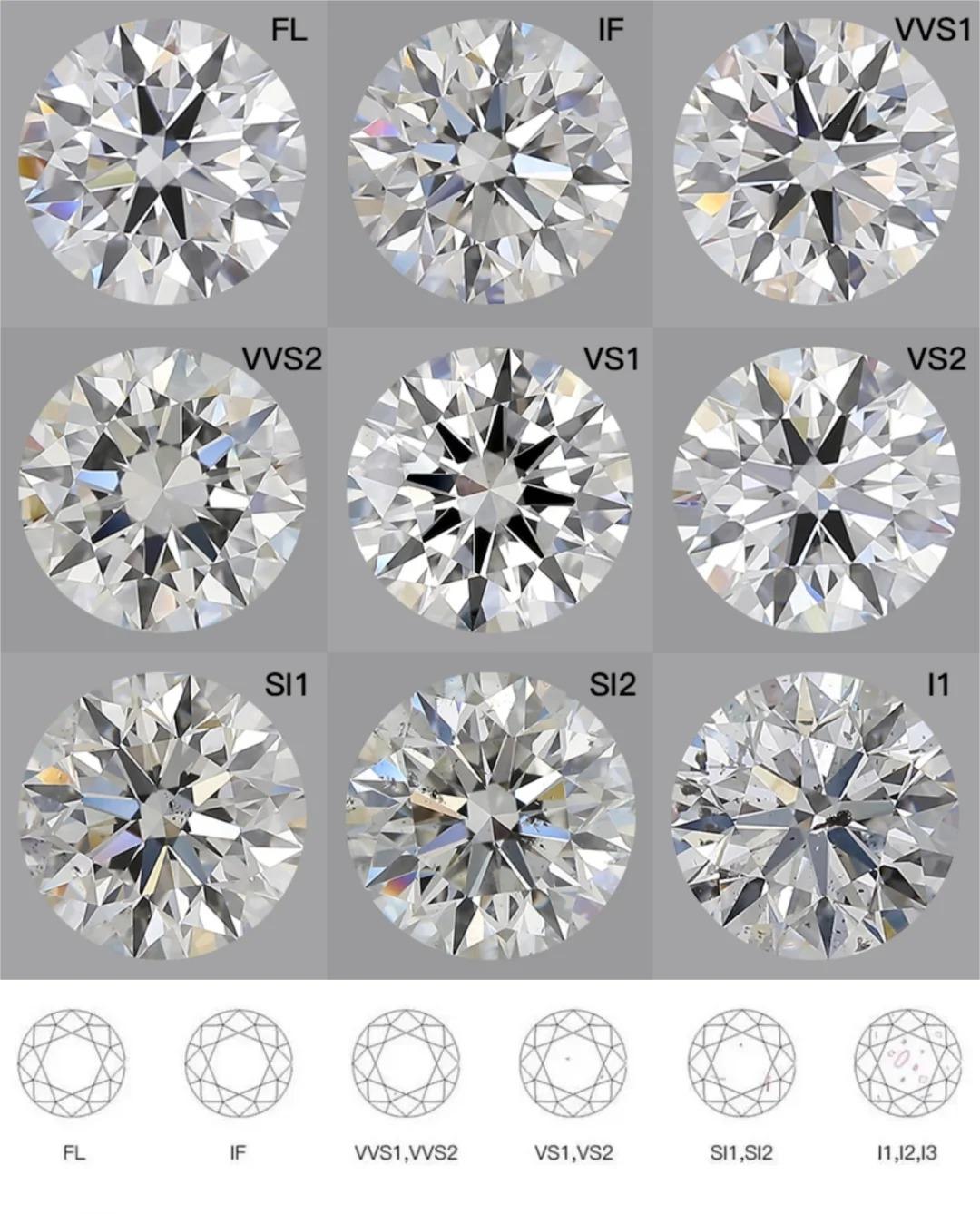Many friends struggle with clarity when choosing a diamond.
💎 Diamond is a natural gemstone, in the formation process inevitably have a variety of internal flaws, different types of flaws, the degree of impact on clarity is different, understanding these later I believe it will be very helpful to select diamonds.
In the diamond GIA certificate, the GIA certificate of less than 1 carat is usually a small certificate, which is described by the “Clarity Characteristics” column in the lower left corner of the certificate. GIA certificates over 1 carat will draw a clear sketch, indicating the type and location of defects.
✅ First let’s look at some common inclusions of natural diamonds:
1️.Crystal
It is a mineral crystal (natural inclusions) in a diamond, and there are light and dark inclusions, and the dark color has a greater effect on clarity than the light color. Crystals can be good or bad, depending on size, color, and location. Try to avoid dark crystals with a relatively large area, which have a certain impact on the diamond fire color. Beware of black inclusion, do not be visible to the naked eye black spots, generally common in clarity SI and below.

2.Feather
Cracks inside or extending to the inside of the diamond, this flaw is like a feather, even at high clarity will exist, clarity VS and above this flaw does not affect, but clarity SI below may be a real crack, so try to avoid the SI longer such flaws. Do not large, in the waist of the feather crack, affect the hardness of the diamond, small can be accepted.

3️.Pinpoint
The small inner body of the bag is the size of a “pinhead” when viewed under a magnifying glass, and has no effect. Often seen in vvs level clarity.

4️.Needle
These flaws look like tiny needles, but are actually elongated crystals. Little effect on the diamond fire color.

5️.Cloud
Many small magazines are gathered together, hazy and borderless, like clouds. The certificate is marked with a small circle of dotted lines. This small range of defects is relatively friendly compared to other defects. However, a large range of clarity below SI should pay attention to whether it is “cream diamond”.

6️.Indented Natural
A concave natural surface is a small hole that is naturally formed into the inside of a stone. Usually in the waist of the diamond, the small hole will accumulate dust, and over time the depression will become dark, but do not worry, it is difficult to see with the naked eye.

7.Natural
In order to preserve the weight of the diamond, the original concave crystal face or facet is retained, generally in the diamond waist, and the small does not affect.

8.Knot
White or colorless diamond small crystals, polished to reveal the surface of the diamond, not recommended.

9.Twinning Wisp
The natural radial texture within a diamond, similar to spider webs, cotton wool, and growth lines. There are two types – light or colorless, dark or black. Do not have obvious black, the diamond looks dirty, and do not have a lot of twin grain, which affects light refraction and causes Cream diamonds. Small amounts make no difference.

10. Cavity
The nicks and holes in the diamond’s surface. Dirt and dirt usually get inside the diamond through holes. Do not choose, most of the diamonds below the SI.

11. Bruise
Marks left on the surface by improper manual polishing.

12.Beard
The diamond was improperly rounded, leaving small cracks in the waist.

13.Laser Drill Hole
The holes left when a laser is manually used to remove the dark inclusions inside a diamond, do not. (Note: Some bad merchants in order to sell, will inject transparent gel into large cracks to eliminate defects, we must be careful when buying.

14.Etch Channel
The diamond was invaded by hot magma under the surface of the diamond weak area, leaving behind the surface of the inward extension of the tube trace. Laser marks are generally perpendicular to the countertop, and the tube is smooth. The concave tube is generally curved, and growth traces can be seen in the tube.

15. Chip
Small openings common at the waist and bottom tips.

📝 A brief summary
It is not recommended to accept these flaws
🚫Crystal :Large dark crystals
🚫Feather : Long below SI feather SI
🚫Cloud : Large area clouds below SI
🚫Knot
🚫Cavity
🚫Chip
🚫Etch channel
🚫Beard
🚫Bruise
🚫Laser Drill Hole
✅ When buying diamonds, if we just pursue the effect of wearing, the naked eye without defects can be accepted, there is no need to tangle with a certain class of defects, in addition, SI below the level is not recommended to buy!!!



